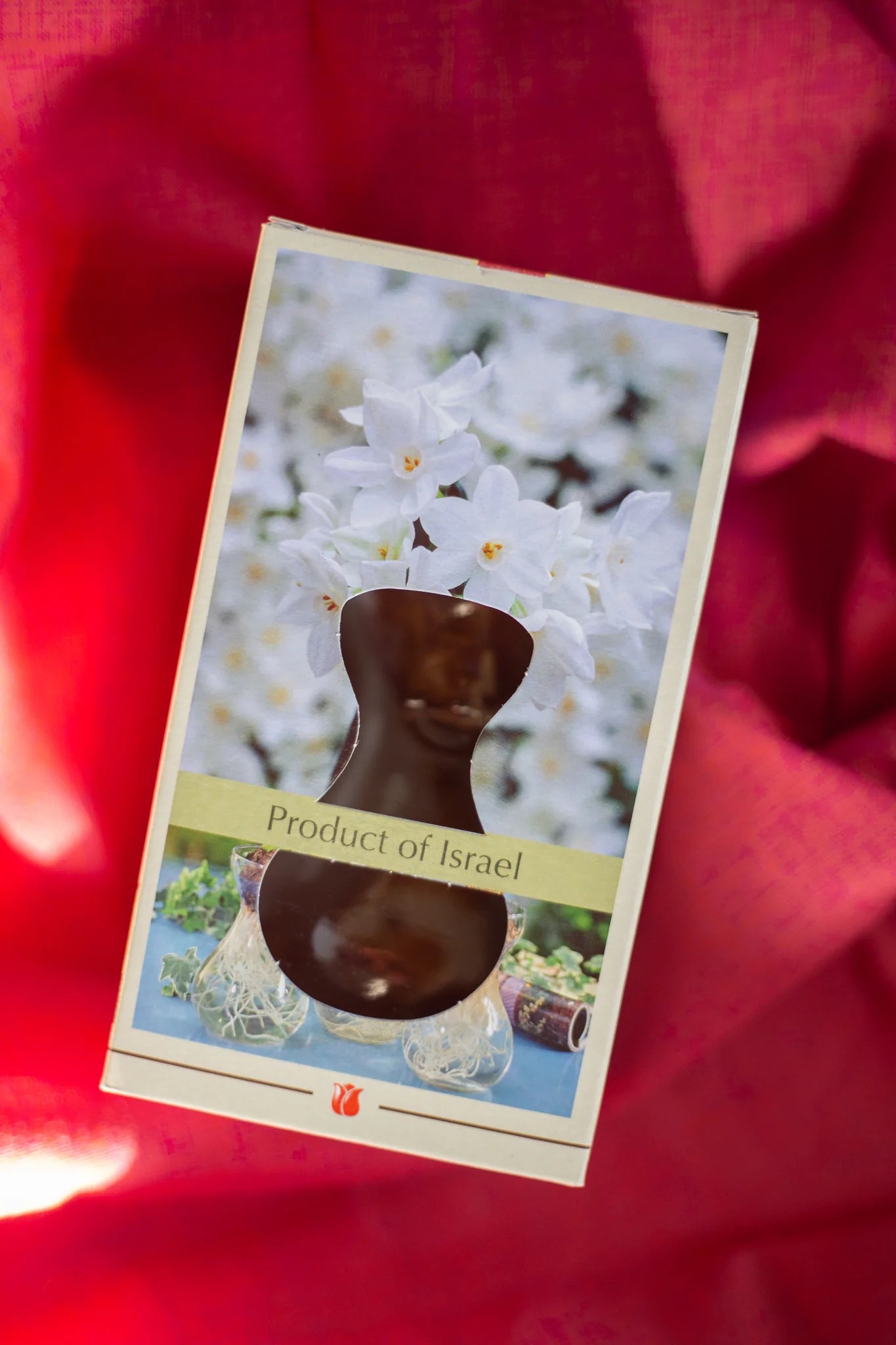
How to Force Flower Bulbs Indoors
Forcing flower bulbs indoors for Christmas is a great way to get some fresh color during the dreary months of winter. It is simple to do and can bring lots of joy around the holidays! Some bulbs that are ideal for forcing indoors include hyacinths, paperwhites, and amaryllis. They can all be grown with little to no soil, and do not take up a lot of space!
Forcing Paperwhites
Paperwhites are extremely easy to grow indoors and all you have to do is add water! If you have a forcing vase, all you must do is set the bulb in top, root side down, and fill with water to just below the bulb’s roots. If you are growing paperwhites in a bowl, add some stones on the bottom, add water, and set the bulb on top of the stones. It is crucial that the bulb itself is not sitting in the water. After adding water, place the bulb in a warm, sunny location as they prefer temperatures around 70 degrees.
Replace or add water to the vase every week to ensure that the bulb is getting water. It typically takes paperwhites between 6 and 10 weeks to bloom depending on the temperature and growing conditions so be patient! Certain varieties of paperwhites are extremely fragrant, so if you are sensitive to strong odors it is best to look for a variety that does not have a strong scent!
Forcing Hyacinth Bulbs Indoors
Similar to paperwhites, hyacinths can be forced indoors by just adding water. Fill your forcing vase with water, to just below the roots of the bulb, being careful to ensure that the bulb is not sitting in water. It is critical that hyacinths go through a dormant period, by placing them in a cool, dark place for 10-12 weeks. We recommend keeping them in a cool basement or garage where they are completely away from light. Check the bulbs process on a weekly basis to ensure that the roots are able to reach the water.
When the bud gets to be 2-3” tall, you can then move it into a sunny area with warmer temperatures. This will allow the bulb to bloom, which normally happens 12 to 14 weeks after initially exposing the bulb to water. Keep in mind that you are trying to imitate the process the bulb goes through when planted outside in the fall, is in the ground over winter, and then blooms in the spring. Hyacinths have a beautiful scent and are great way to brighten up those cold winter months!
Forcing Amaryllis Bulbs
Amaryllis truly make a grand statement when grown indoors. There long, strong stems display a large complex flower that is sure to turn heads at your holiday get-togethers. Amaryllis do require a small amount of soil to grow, but other than that the process is relatively simple. To start, fill a small pot 2/3 of the way full of soil or other growing medium, and place the bulb into the soil, root end down. Then add additional soil to secure the bulb. Make sure that the top 1/3 of the bulb sits above the soil.
Once you have planted your amaryllis bulb, you will want to keep the planter in a sunny location and maintain temperatures between 65-70 degrees Fahrenheit. It is important to keep the growing medium moist, but not wet. If the bulb has already started growing before you plant it, be sure to plant it as soon as possible and it will straighten itself out. Bloom time depends on the variety of amaryllis, but they typically bloom between 6 and 12 weeks after planting
What to do After Amaryllis Die?
A commonly asked question we get, is what to do with the amaryllis bulb after it is done blooming. The good news is that you can save your bulb to force again the next year, but there a few things you must do to be successful. When the petals fall of the stem, you will want to cut the stem near the bulb but allow the green foliage to continue growing. Continue watering and consider adding some fertilizer over the remainder of the winter months.
Once the chance of frost has passed outdoors, you will then want to move your bulb outside and let it continue absorbing energy from the sun throughout the summer. At the end of summer, bring your bulb indoors and let it completely dry out. Store it in an area that is cool and dry, that doesn’t get much light. Once your bulb is completely dry, you are ready to replant and repeat the process!
Forcing bulbs is such a fun process! It is exciting to see the bulb setting down roots, growing, and blooming. This is a great way to get some fresh décor over the winter months and is a great project for kids. Happy growing!




Leave a comment